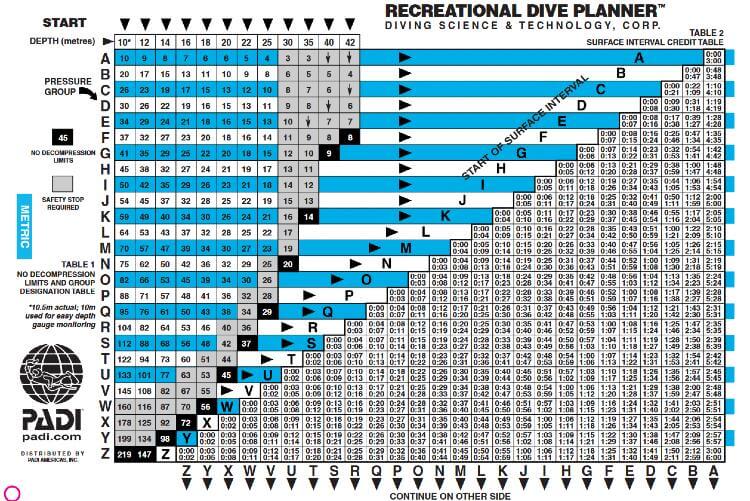
Blog #3
No Decompression Limits (NDL)
NDLs: Friend or Foe in the Underwater Realm?
For recreational scuba divers, the allure of the deep blue holds both thrill and responsibility. Among the safety considerations, the No Decompression Limit (NDL) stands as a crucial line, separating carefree ascents from the need for more complex, time-consuming decompression stops. This essay delves into the intricacies of NDLs, exploring the pros and cons that shape their role in underwater adventures.
On the positive side, NDLs offer undeniable advantages. By defining the maximum bottom time within specific depths, they provide a simple, accessible framework for safe diving. Dive tables and dive computers readily translate complex decompression theory into user-friendly limits, empowering divers to plan dives within acceptable risk parameters. This simplicity fosters confidence, particularly for beginners, allowing them to explore the underwater world without getting bogged down in intricate calculations. Furthermore, NDLs promote efficient dive time management, enabling divers to maximize their exploration while adhering to safety guidelines.
However, the simplicity of NDLs comes with inherent shortcomings. One crucial limitation lies in their inability to account for individual variations in divers’ physiology and susceptibility to decompression sickness (DCS). Factors like age, fitness level, hydration, and exertion are not factored into NDLs, potentially putting some divers at higher risk even within the seemingly safe boundaries. This one-size-fits-all approach can lead to a false sense of security, especially for experienced divers pushing the limits of NDLs.
Another drawback of NDLs stems from their static nature. They fail to capture the dynamic, evolving physiology of a diver during a dive. Factors like ascent rate, exertion levels, and water temperature, all of which influence nitrogen absorption and bubble formation, are not considered in NDLs. This rigidity can lead to situations where even dives within NDLs pose a risk of DCS if circumstances deviate from the idealized conditions assumed by the tables or models.
Given these limitations, it’s crucial to recognize that NDLs are not absolutes, but rather guidelines to be approached with caution and critical thinking. Divers should consider incorporating additional safety measures, such as slower ascent rates, safety stops, and conservative dive planning, especially when operating at or near NDLs. Moreover, ongoing education and training in decompression theory can equip divers to make informed decisions based on their individual physiology and the specific diving conditions.
In conclusion, NDLs remain valuable tools in recreational diving, providing a basic framework for safe exploration. However, their limitations necessitate a cautious approach, one that acknowledges individual diversity and dynamic diving conditions. By understanding both the pros and cons of NDLs, and applying additional safety measures and knowledge, divers can navigate the underwater realm with confidence, leaving only bubbles in their wake, not regrets.
Social share


 ICONIER Digital Agency
ICONIER Digital Agency